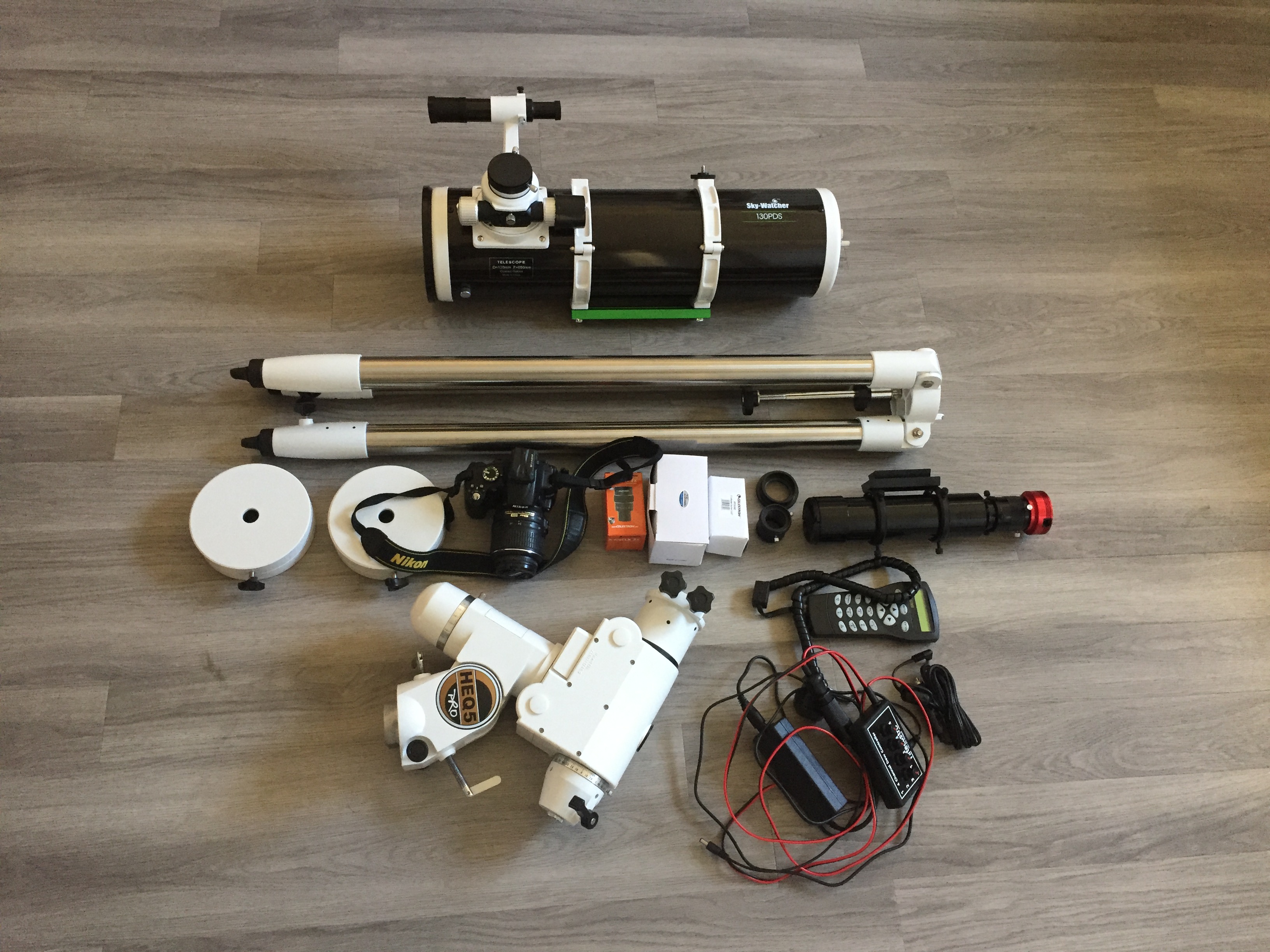
So thats the basics of the kit I use… You can see it assembled in the previous blog post. So lets go through and see what I’ve got at the moment…
Telescope
I have the SkyWatcher Expolorer 130PDS reflector as my main imaging scope. This has a 650mm focal length and a 130mm primary mirror giving it a final ratio of f5 so it’s a fairly fast telescope.
There is also the 6×30 finderscope attached to the body to help me get everything aligned.
On top of that there is the guidescope which is a 280mm refractor running at f4.67.
The Mount
Next is probably the most important section of any astrophotography setup. The mount.
I went with the SkyWatcher HEQ5 Pro GoTo mount. This is a German Equatorial mount that has a star database, polarscope and tracking all built into it. I will probably do a separate post on the mount and how to set it up in the future as it’s quite an involved process.
In a nutshell this mount on its own enables me to take much longer exposures than I would be able to if the telescope was just on a fixed mount.
The Cameras
This is the area that I am currently lacking on. I am using a completely stock Nikon D5000 DSLR camera mounted straight to the telescope for my main imaging. It’s good enough for now but I’m getting towards the limits of what it can do now so will be looking to upgrade this camera fairly soon.
I also have a ZWO ASI 120MM Mono camera as my guide camera. With this active and properly setup I have managed to increase my exposure times from 30 seconds all the way up to 300 seconds and I haven’t found the limit yet!
Filters
Currently I only have an LRGB filter set that will work with the ZWO camera for planetary stuff but I haven’t got started with that yet so it’s something that will come in the future. I am more likely to get a filter wheel to enable me to use these filters easier without losing focus and alignment.
Control machine.
This is another part that will be upgraded soon. I am currently running on a very old Windows laptop to connect everything into. This sits outside with the scope and cameras connected to my wifi network so I can then control it all from inside using TeamViewer.
The Software
There are 4 pieces of software I use for imaging.
Adobe Photoshop for processing.
Deep Sky Stacker for combining all the images of an object.
APT (Astrophotography Tool) for controlling the camera and setting up an imaging session
PHD 2.0 (Push Here Dummy) for autoguiding to make sure my targets don’t move in the frame while I am imaging.
I think that just about covers everything and I’ll try to keep this updated as I make improvements to the setup!
Clear Skies!